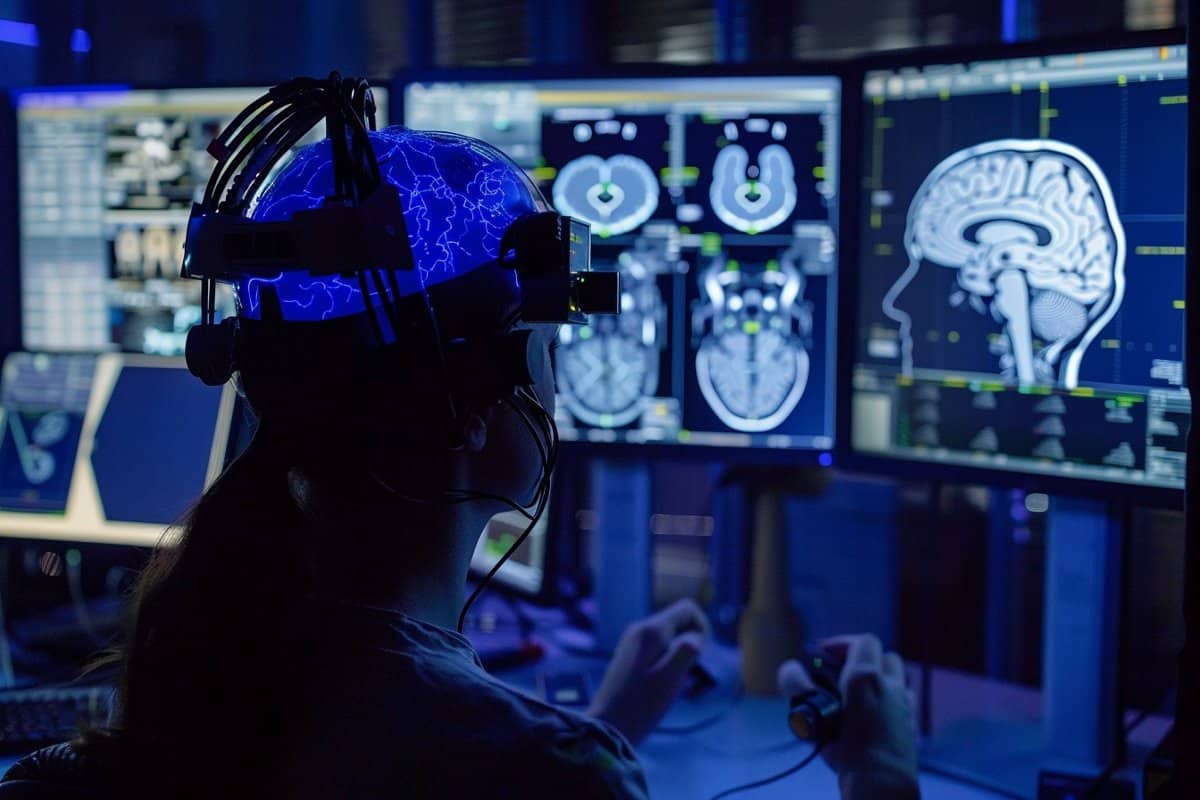Summary: Researchers are trialing a novel brain-computer interface (BCI) with the potential to transform neurosurgical procedures and patient care. The Layer 7 Cortical Interface, boasting 1,024 electrodes for unparalleled brain activity mapping, promises new insights into neurological and psychiatric conditions. This flexible, ultra-thin device is designed for minimal tissue damage, marking a significant advancement in BCI technology. The study aims to leverage this detailed data to explore brain functions and disease impacts, with hopes of uncovering new treatments.
Key Facts:
- Innovative Design: The Layer 7 Cortical Interface features 1,024 electrodes on a flexible film, offering high-resolution mapping of brain activity.
- Interdisciplinary Research: A multidisciplinary team at Mount Sinai is analyzing the data from this interface to understand brain behavior relationships and disease effects.
- Clinical Potential: This BCI could significantly improve the understanding of neurological conditions and lead to novel therapeutic approaches.
Source: Mount Sinai Hospital
A multidisciplinary team of neurosurgeons and neuroscientists from the Icahn School of Medicine at Mount Sinai are the first in New York to study a new brain-computer interface that’s engineered to map a large area of the brain’s surface, in real time, at resolutions hundreds of times more detailed than typical arrays used in neurosurgical procedures.
A brain-computer interface (BCI) is a system that deciphers brain signals and translates them into commands for external technologies. The ultimate goal of a BCI is to restore function to patients with debilitating neurological conditions by enabling them to operate digital devices using only their thoughts.

The Layer 7 Cortical Interface, developed by Precision Neuroscience Corporation, contains 1,024 tiny electrodes spanning an area of 1.5 square centimeter, embedded in a flexible film that conforms to the brain’s surface. The film is one-fifth the thickness of a human hair and was designed to be implanted and removed by neurosurgeons without damaging brain tissue.
“Mount Sinai has established an international reputation for our ability to conduct the most advanced biomedical and scientific research, for our commitment to exceptional patient care, and for our entrepreneurial approach to generating new treatments and advancements in care,” said Joshua B. Bederson, MD, Chair of Neurosurgery at the Mount Sinai Health System and Co-Founder of Mount Sinai BioDesign.
“This culture of excellence, innovation, and collaboration attracts some of the brightest and best clinicians and researchers in the world who are capable of rapidly translating research breakthroughs into new products and services that provide meaningful benefit to patients and our society.
“We are proud to be one of the leading sites participating in the trials for the new array and eager to see what we learn from the detailed information we will collect and analyze.”
As part of an open-label, single-arm feasibility study, Mount Sinai neurosurgeons are temporarily placing the investigational device on the surface of the study participants’ brains during intracranial procedures where surface mapping is routinely performed and correlated to evoked potentials (tests that measure the brain’s response to sensory stimulation) or standardized behavioral tasks that are routinely performed as part of these procedures.
The device records high-resolution electrophysiological signals and the data collected is compared to that obtained using standard-of-care cortical surface arrays.
A team of Mount Sinai neuroscientists who have deep expertise in human electrophysiology will analyze and interpret the massive amount of data collected from the device.
A secondary objective of the study is to assess the ability of the thin-film electrode to map electrophysiological correlates of awake behavioral tasks, including motor, speech, and cognitive tasks.
“Despite the vast complexity of activity across the human brain, standard monitoring tools can only capture a tiny fraction of the data we need—from a small handful of areas, or at very slow temporal resolution.
“This low-resolution data significantly limits our understanding of brain function and brain disorders,” says Ignacio Saez, PhD, Associate Professor of Neuroscience, and Neurosurgery, Director of the Human Neurophysiology Laboratory, and Principal Investigator of the trial at Icahn Mount Sinai.
“The new device is exciting because it provides us with an extremely detailed depiction of electrical activity in the brain, capturing thousands of data points per second from a thousand brain sites in each participant.
“By monitoring neuronal activity at this unprecedented resolution, our interdisciplinary team at Mount Sinai hopes to gain important insights into how brain function supports behavior and is affected by disease states.
“Our ultimate goal is to obtain actionable knowledge that will open the door to new treatments for neurological and psychiatric disorders and improve quality of life for our patients.”
Precision Neuroscience was co-founded by Benjamin Rapoport, MD, PhD, Assistant Professor of Neurosurgery at Icahn Mount Sinai, a practicing neurosurgeon who has a PhD in electrical engineering and computer science.
Dr. Rapoport also serves as the Scientific Director of Mount Sinai BioDesign, a medical technology prototyping center and incubator housed within the Mount Sinai Health System.
Dr. Rapoport is an equity owner in Precision Neuroscience and serves as their Chief Scientific Officer and a member of their board of directors. As a faculty member in the Department of Neurosurgery, he reports to Dr. Bederson.
Neither Dr. Bederson nor Mount Sinai have a financial interest in Precision Neuroscience. All Precision Neuroscience research at Mount Sinai is conducted by independent investigators without financial ties to the company.
About this neurotech and BCI research news
Author: Elizabeth Dowling
Source: Mount Sinai Hospital
Contact: Elizabeth Dowling – Mount Sinai Hospital
Image: The image is credited to Neuroscience News






